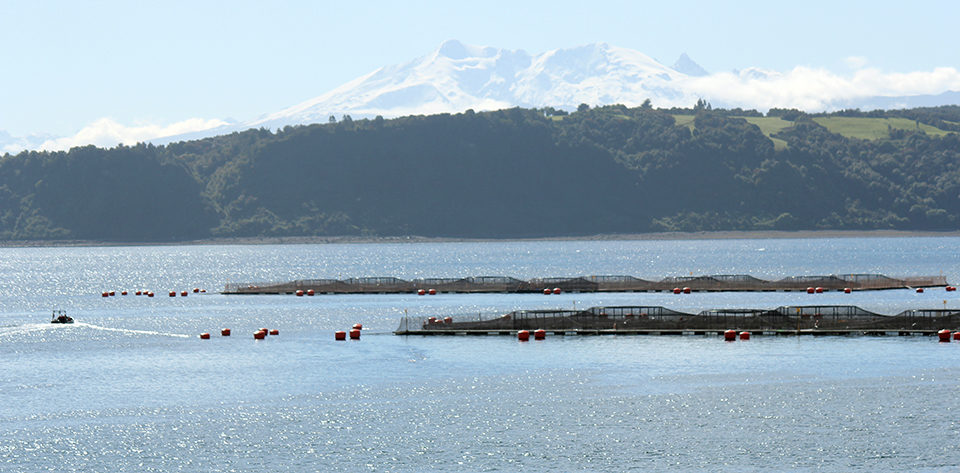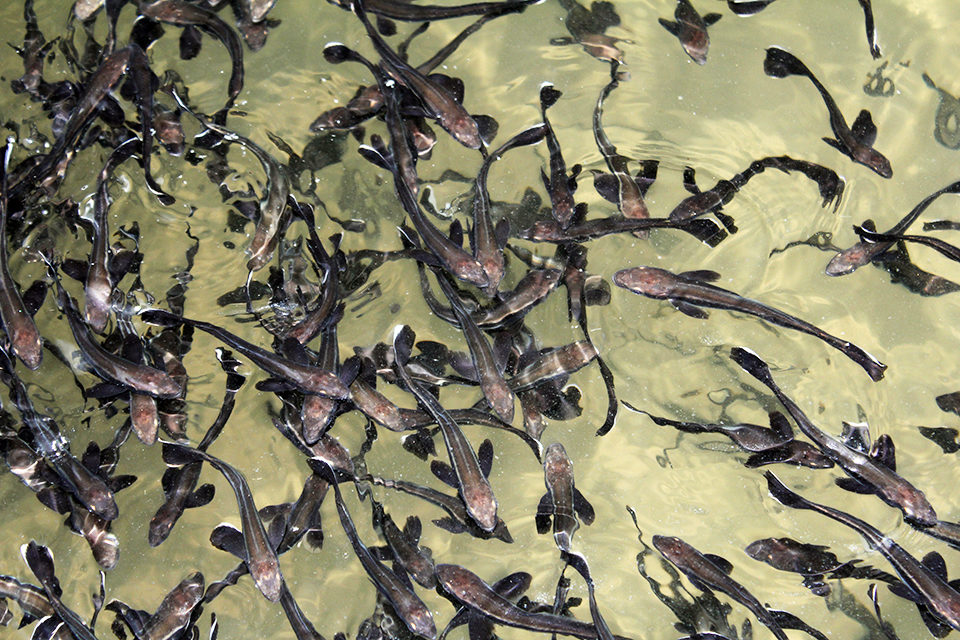Options expand as farming industry matures

With wild stocks under increasing pressure and more consumers demanding healthy seafood, aquaculture has been the fastest-growing food-producing sector since the 1970s. However, aquaculture is considered one of the riskier protein-producing sectors due to the organisms being cultured in an aquatic environment. Commercial aquaculture is in its relative infancy when compared to animal protein sectors such as poultry and beef, suggesting the learning curve in husbandry practices and operational improvements is steeper than in other longer-established food-producing sectors.
Modern aquaculture is more likely to prosper with access to finance and risk-transfer mechanisms such as aquaculture insurance, which covers the mortality or loss of livestock. In aquaculture-producing markets where companies are well supported by the financial sector, aquaculture or biomass insurance tends to be well developed. Such financial instruments can play a central role in further developing the aquaculture industry.
Aquaculture insurance
Mortality of stock is a normal occurrence in aquaculture, and most farms at some stage suffer from losses beyond the natural mortality rate as a result of an unaccounted peril. The rationale for aquaculture insurance is that producers can substitute a known cost in the form of an insurance premium for an unknown potential cost, the loss of stock.
The ability to insure finfish or shellfish stock provides a mechanism that demonstrates to investors and creditors that the biggest asset and item of collateral is secure, and that sudden events will not put the viability of an aquaculture operation into question.
Insurer challenges
The aquaculture industry is valued at over U.S. $61 billion annually, but aquaculture stock mortality insurance has a relatively low premium income compared to other industries of a similar size. Aquaculture is a technically difficult industry to insure, requiring specialist expertise to gauge the risk of loss, so only a few companies are able to provide aquaculture insurance. In the past, insurance companies were attracted to aquaculture’s impressive growth rate and offered insurance without an adequate technical approach, imposing a penalty on risk analysis and leading to significant losses.
Aquaculture stock mortality cover is a specialty type of insurance. Unlike for mainstream classes of cover, aquaculture insurers do not use actuarial studies to determine premium rates. Rather, they rely on specific information provided by clients to assess risk on a farm-by-farm basis. In the future, sophisticated tools such as aquaculture modeling will assist with the evaluation of sustainability and risk.
The development of aquaculture insurance has been partly constrained by the requirement that producers maintain good stock control. Insurance companies need to be reassured regarding the number and value of stock at risk when a loss occurs. This is particularly difficult for small-scale aquaculture, where stock control is of less relevance than for commercial aquaculture operations. Improvements in technology and husbandry practices must be accompanied by both stock-keeping and biomass estimation techniques, which play an important role in streamlining operational factors such as projections and cost control issues.
Aquaculture insurance has accompanied the growth of the salmon, trout, sea bream and seabass industries, and has its strongest presence in Europe, Canada and Chile. In these markets, aquaculture producers have access to the insurance product through professionals who provide valuable local support.

Shifting focus
Aquaculture insurance companies are shifting their focus from the established markets to other geographic areas and species with significant growth rates. Asia already produces 89 percent of the world’s aquaculture biomass, and South and Central America are also booming in the export-led production of aquaculture.
In recent years, insurers have been able to expand their aquaculture portfolios in terms of species and location through increased insurance capacity. The provision of an affordable aquaculture product for these producing markets has become a top priority. To this extent, aquaculture insurers have been making efforts to provide cover in China, Vietnam, Thailand, Indonesia, Brazil, Ecuador, Colombia, Costa Rica and other countries with substantial biomass production.
The aquaculture industry is diversifying in order to satisfy the requirements of different markets. An example of this is the market penetration enjoyed by tilapia in the United States, as well as other species such as geoduck and abalone in China. As a result of these market-led opportunities, species such as tilapia, Pangasius, barramundi, cobia and grouper have enjoyed continued growth, development and industry consolidation.
Aquaculture insurers have adopted a proactive approach toward providing cover for these emerging aquaculture species. The culture practices, life cycles and fish biology for the majority of these species are well understood and documented in scientific literature.
Insurance capacity
The issue of insurance capacity, the total exposure an insurer can maintain in its portfolio, has significant effects on the price and availability of cover for emerging aquaculture species. The lack of insurance capacity has meant that aquaculture farms have in the past found a mismatch between the premium they are willing to pay and the premium the insurance company is willing to accept. Increased insurance capacity has gone a long way to make aquaculture insurance an attractive risk-transfer option.
Risk management
Each operation has a different approach to risk management and transfer that affects the overall risk profile. It is possible to eliminate a high degree of risk through management strategies, staff training, biosecurity measures and aquaculture-modeling techniques to determine optimal stocking densities and feeding requirements. Aquaculture operations can work to minimize risks within their control and then purchase limited aquaculture insurance to cover the residual exposures.
This selective approach is a cost-effective and efficient mechanism to transfer risk. One such example of insuring for a residual risk is for aquaculture farms to insure against losses due to meteorological risks, such as hurricanes and typhoons. Hurricane Mitch in 1998 caused huge losses of stock at several aquaculture farms in Central America. Typhoons are also a regular occurrence in Asia, causing major losses of fish and shellfish stocks at aquaculture farms. The unusually cold winter of 2008 caused substantial losses to tilapia farms in the Guangdong province of southern China.
Direct insurance, reinsurance
Aquaculture insurance policies are tailored to each operation’s individual requirements and are therefore flexible in terms and conditions. The procedure for obtaining a quote is for aquaculture producers to complete a proposal form with information about their farming operations and detailing their requested cover requirements. Based on the information provided, aquaculture insurers present a range of cover options and costs to suit the client’s needs.
Aquaculture insurers from the London Insurance Market, such as Lloyds of London, are licensed to provide legally binding insurance cover either directly or through reinsurance with local insurance companies around the world, meaning that stock mortality cover is available for the aquaculture industry even when no cover is offered locally.
To achieve significant penetration into new aquaculture markets, the aquaculture insurance industry must continue to seek new partnerships with insurance professionals, consultancy companies and feed companies to boost aquaculture insurance’s appeal.
Insurers must also work with aquaculture producers to better understand the requirements for different species and correspondingly improve the product and customer service. Insurers have taken steps to address legal and language barriers, including adapting insurance contracts to comply with local insurance regulations and providing information on aquaculture insurance in different languages.
Perspectives
As aquaculture continues to grow to satisfy the increasing need for animal protein, aquaculture insurance will have an important role to play as the industry consolidates and matures, particularly as aquaculture becomes a strategic industry for many countries.
The long-term prospects are positive, and the ability of aquaculture insurers to increase their portfolios and spread risk will benefit producers in the form of a more competitive market and lower premium rates. Plenty of progress has been achieved in aquaculture management as well as in the aquaculture insurance sector, paving the way for aquaculture insurance to become an integral risk-transfer mechanism for modern commercial aquaculture.
(Editor’s Note: This article was originally published in the September/October 2012 print edition of the Global Aquaculture Advocate.)
Author
-
Rui Gomes Ferreira
Director
Longline Environment Ltd.
2nd Floor, 145-157 John Street
London, EC1V 4PY United Kingdom
Related Posts

Intelligence
Recent farmed salmon losses put aquaculture insurance in focus
Insurance is available for a wide range of species, and will protect capital investment against events or natural hazards that affect fish health, assets and harvests. Effective risk assessment and management strategies are important.

Responsibility
Aquaculture Exchange: Michael Rubino, NOAA
Social license – a community’s acceptance and support of an industry’s presence – is a key factor in aquaculture’s growth prospects. It’s a major obstacle U.S. waters, in particular. Michael Rubino of NOAA Fisheries discusses the challenges.

Innovation & Investment
Aquaculture data-collection app provides cloud coverage
Aquanetix, launched by two fish biologists, employs cloud technology for electronic data collection, enabling farmers to monitor infrastructure, minimize feed losses and make informed operational business decisions based on real-time reports about their stocks.

Responsibility
Fairness, stability in ensuring human rights in seafood
In the last of our three-part series on advancing human rights solutions in seafood, Magdalena Lamprecht-Wallhoff shares how social investment is key to the culture and success at Regal Springs Tilapia, the world’s largest farmed tilapia producer.


